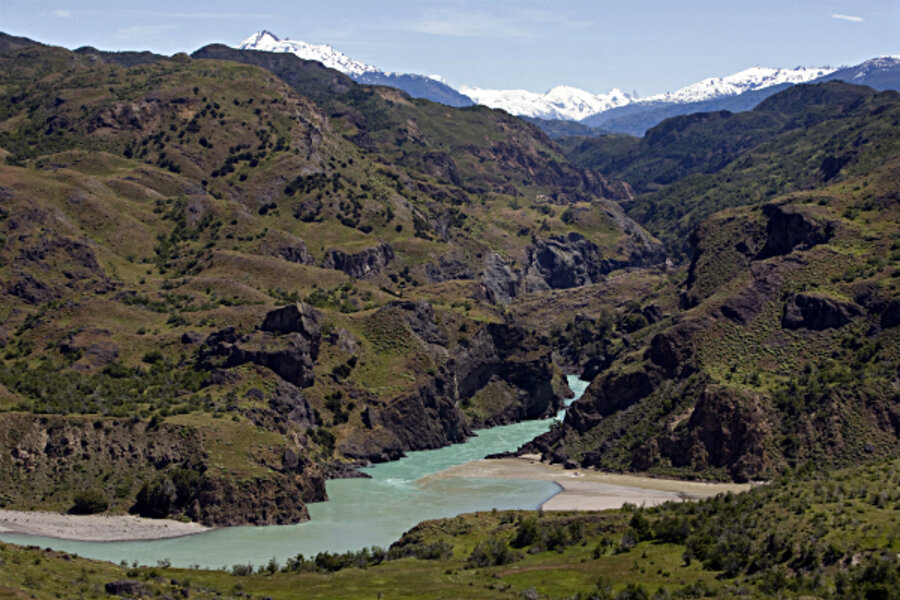Man arrested in Chile for stealing a glacier
Loading...
When my dear friend and colleague, photographer Melanie Stetson Freeman, and I traveled to the remote town of Cochrane in Chile’s Patagonia to do a story about a proposed hydroelectric dam, residents were most angered by the fact that the majority of electricity generated from the rivers of Patagonia was intended not for them but for the capital city, Santiago, and nearby industry.
Now once again, it seems, the capital is "stealing" another of Patagonia's greatest resources: its glaciers.
This week, a man was arrested in Cochrane for transporting via truck 11,453 pounds of ice illegally removed from the Jorge Montt glacier.
Why would one steal a glacier? News reports say it was destined for the upper classes of Santiago, where “glacier” ice in drinks is considered a luxury (although our correspondent in Santiago tells me he has never seen “glacier” ice marketed at any bars – apart from being illegal, it would likely be as shunned, at least among the environmental set, as fur coats).
Ice might seem a more innocuous good to illegally trade than, say, drugs or people. But this operation is probably even more challenging to pull off.
The authorities say the man was spotted transporting ice in Bernardo O’Higgins National Park, according to the wire service EFE. The glacier is only accessed by water via a four-hour trip from Caleta Tortel, a coastal village where houses are built on stilts and there are no roads, just wooden walkways.
And getting from there, back to Santiago, is no easy feat.
Melanie and I flew into Balmaceda and headed south for hours. And days. Down the Austral highway to the farthest point south, Caleta Tortel. The roads are rough, windy, all dirt, and so narrow that in most places one car has to pull over while the other passes. That makes for slow traveling, and several near accidents (like my almost head-on collision with a gas truck).
Upon our return a week later, as we neared Balmaceda where the road is paved once again, we got out of our four-wheel-drive and hugged, crying tears of relief. We survived!
Stealing ice is no laughing matter on the environmental-front either. Scientists say that out of all the glaciers in Chile, the Jorge Montt glacier is retreating the fastest, reports the BBC.
Rory Carroll of the Guardian notes that while some dispute whether global warming is playing a role in glacial retreat, this is one case in which both sides can agree on the role of human action.
The driver is being accused of theft – the ice in the back of his truck, reportedly found in large plastic sacks, is worth at least $6,000 (though that is based on the going price for ice; for 1,000-year-old ice, plus the risks involved in stealing it, it could be much higher). The driver could face charges under the national monuments act, according to the Chilean daily El Mercurio (in Spanish).
I had been eager to visit the glacier from Caleta Tortel, but the trip was too time-consuming. We had too much reporting to do. How angry I would have been to have forked out the money and committed the time to take a trip, only to see the glacier chipped away.
At least the ice seized will be going to good use. EFE reports that it is being given to farmers associations which will use it to irrigate crops in Cochrane to offset a drought that has been impacting agriculture in Chile.





